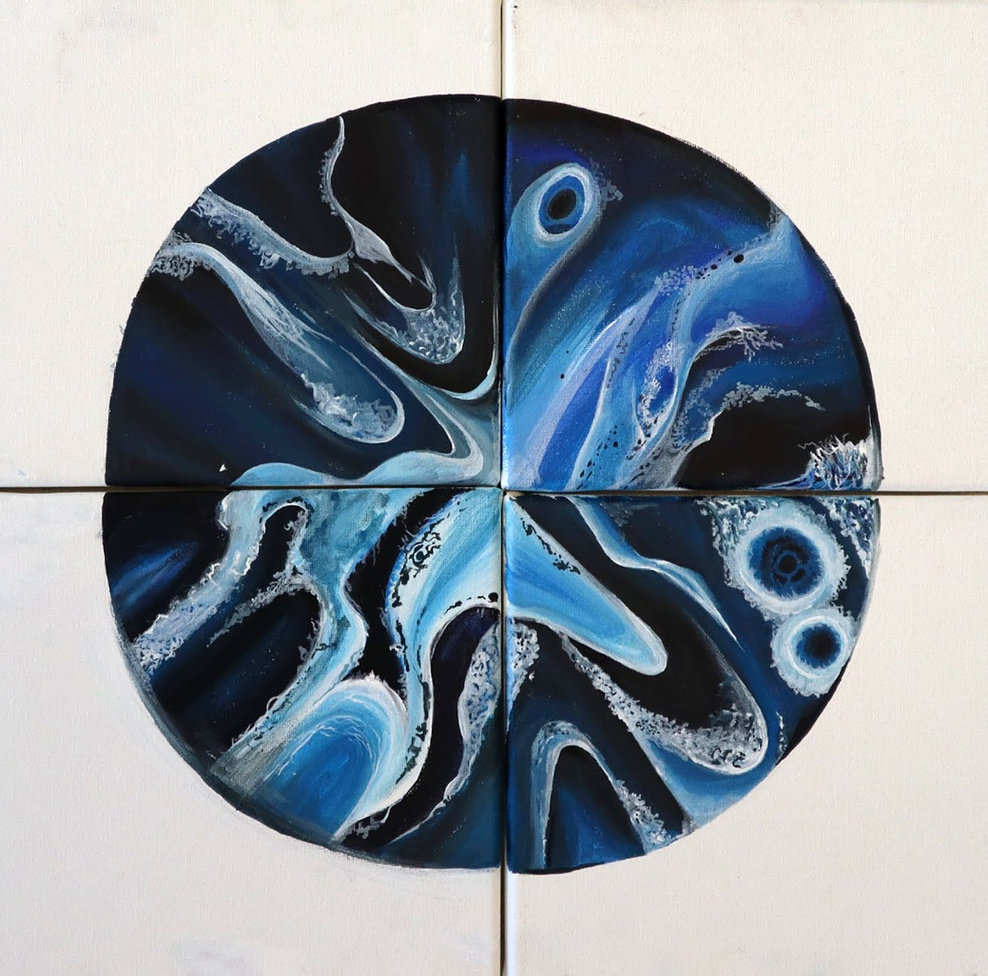Temperature
Resize canvas
The phenomenon of Diffusion-Limited Aggregation (DLA) is a classic process in statistical physics used to model the formation of fractal-like structures. It describes how clusters grow when diffusing particle become irreversibly stuck when they contact an existing aggregate. This simple model captures the emergence of beautiful branching pattern seen in many natural settings, and the former chair of my department contributed a lot to our understanding of how these and other fractal surfaces evolve!
In this simulation, we begin with a single stationary "seed" particle at the center of a square domain. A configurable number of diffusing particles are introduced into the system, each of which performs a random walk until it hits part of the cluster. As more particles attach, the characteristic DLA structure emerges.
This browser-based simulation employs cell lists for moderately accelerated neighbor searching, allowing for interactive exploration of DLA. While suitable for educational demonstrations and observing the qualitative features of DLA growth, for large-scale or high-precision scientific studies, more specialized computational tools are typically used. You can find examples of research-grade simulation code for various physical models from academic groups who focus on computational physics.
The controls for this DLA simulation should be fairly intuitive:
In this simulation, we begin with a single stationary "seed" particle at the center of a square domain. A configurable number of diffusing particles are introduced into the system, each of which performs a random walk until it hits part of the cluster. As more particles attach, the characteristic DLA structure emerges.
This browser-based simulation employs cell lists for moderately accelerated neighbor searching, allowing for interactive exploration of DLA. While suitable for educational demonstrations and observing the qualitative features of DLA growth, for large-scale or high-precision scientific studies, more specialized computational tools are typically used. You can find examples of research-grade simulation code for various physical models from academic groups who focus on computational physics.
The controls for this DLA simulation should be fairly intuitive:
- Sliders and Text Boxes: Located below the animation, these allow you to adjust the "Temperature" (affecting diffusion), the total number of "Diffusing particles" actively moving, and the "Canvas Size."
- Buttons:
- "Pause (or Resume) simulation": Temporarily halts or continues the particle diffusion and aggregation.
- "Reset simulation": Clears the current cluster and restarts the simulation with a new seed and freshly randomized diffusing particles.
- "Download configuration": Saves a text file representing the current state of the aggregated cluster. Each row corresponds to a particle in the cluster, containing its normalized position (x, y coordinates, typically ranging from 0 to 1 within the logical simulation box) and the simulation timestep at which it attached.
- "Download snapshot": Saves a PNG image of the current visual state of the simulation canvas.
